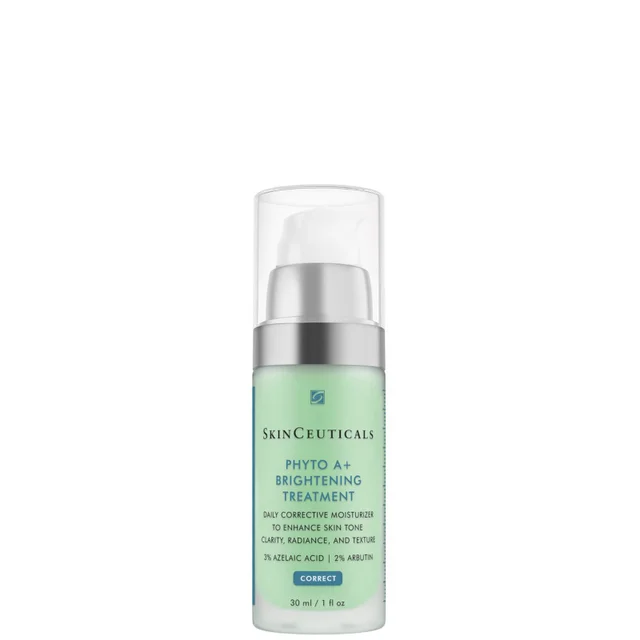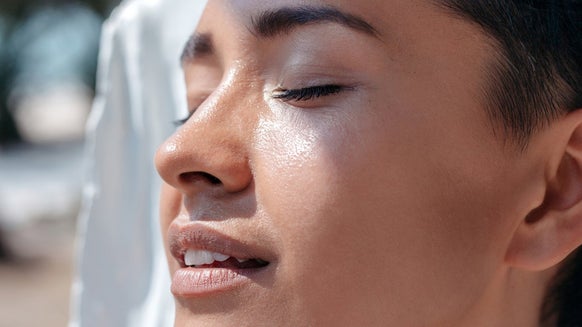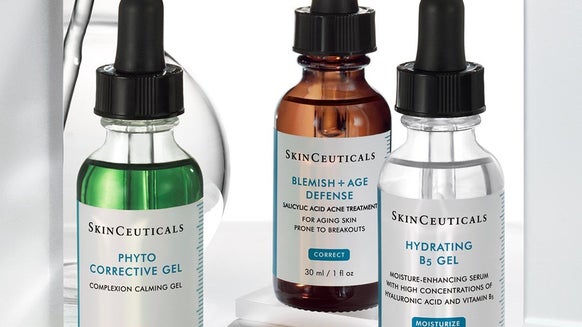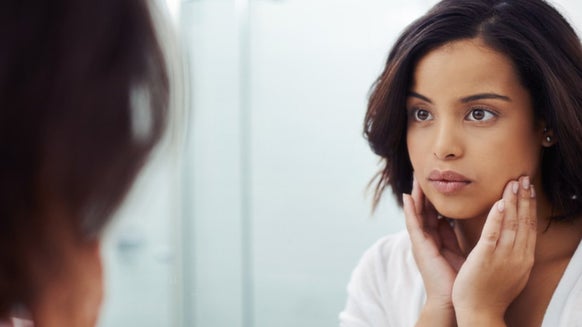Everything You Need to Know About Lactic Acid and Your Skin

These days, the vast multitude of skincare ingredients can be a bit dizzying—particularly when sometimes-scary words like “acid” show up on product labels. But when it comes to lactic acid, fear not! This ingredient can give dull, dry, aging, and even irritated skin new life. And what more can you ask from a tube, tub, or bottle?!
What Is Lactic Acid?
“Lactic acid is an alpha-hydroxy acid that gently exfoliates the top layer of the skin,” says Dr. Elyse Love, MD, a board-certified dermatologist based in NYC. In addition to buffing away dead skin cells and flakes, which can prevent both white and blackheads, it can increase cell turnover and collagen production in clinical doses. It also draws moisture into the skin, which reduces the appearance of fine lines. The result? “Smooth, hydrated, and glowing skin,” Dr. Love says.
While you might think such an effective ingredient would do a real number on sensitive skin, it’s actually fairly gentle, she adds, proclaiming it suitable for most skin types when used properly. That includes melanin-rich skin, since lactic acid helps normalize pigment production leading to more even skin tone, according to Dr. Love.
Although it shouldn’t be fair for one ingredient to do so much for so many, lactic acid is also pregnancy-safe—a good thing for mamas-to-be who really want to glow.
How to Choose a Lactic Acid Product
You can find lactic acid in almost any skincare category, from cleansers and serums to moisturizers and masks. Some good rules of thumb, according to Dr. Love: Serums tend to be the most potent while daily cleansers tend to be gentler. Meanwhile, the strength of masks can vary since they’re not meant to be used more than a couple times a week.
Concentrations tend to range between 2 and 11%, so mind product labels when you’re just starting out. Got sensitive skin? A concentration of 2 to 5% should do the trick. “Higher percentages will give deeper exfoliation but potentially more irritation,” Dr. Love warns.
If you’re looking for a lactic-acid product that’s dermatologist-recommended, start with any of the following—they all top Dr. Love’s list:
“With a gentle 5% lactic acid, it’s one of my favorite lactic acid serums.”
“It contains glycolic and lactic acid to resurface rough skin texture.”
This lightweight moisturizer also contains azelaic acid to target clogged pores in blemish-prone skin.
How and When to Use Lactic Acid
Unlike say, sunscreen, lactic acid should really be used at night, says Dr. Love. Apply a serum after your evening cleanse but before moisturizing just two to three times a week, then gradually up the ante until you’re applying it more frequently without irritation. Stronger products, however, need not be used more than one or two times per week. “How often you ultimately use it depends on what your skin needs,” says Dr. Love. “That may change by season or even the week.”
Otherwise, the biggest thing to keep in mind when adding a lactic acid-containing product to your regime is the other contents of your medicine cabinet: “Remember to not overlap with other exfoliating ingredients on nights when lactic acid is used,” advises Dr. Love.
When introducing lactic acid to a skincare routine that includes retinol, layering them isn’t wise since it could increase your risk of redness, rash, or pigmentation. “I’d advise against using both on the same day,” Dr. Love says. Instead, try retinol on Mondays, Wednesdays, and Fridays and save lactic acid for Tuesdays, Thursdays, and Saturdays.
Potential Side Effects of Lactic Acid
Introducing any new product can run the risk of irritation. That said, lactic acid is well-tolerated by sensitive skin so long as you don’t start too strong or apply it too frequently, Dr. Love says. Should you notice redness or itchiness, don’t give up! Just pull back on strength or application frequency.
When it comes to melanin-rich skin, excessive strength or application can also lead to irritation and post-inflammatory hyperpigmentation, Dr. Love notes. So start conservatively—you’ll still see results.
What Is a Lactic Acid Peel?
While lactic acid-containing cleaners, serums, moisturizers, or masks can complement just about any at-home skin routine, you can also see a pro for a lactic acid peel.
In-office lactic acid peels tend to contain higher concentrations of lactic acid than at-home offerings for more dramatic results: “This is a great treatment for anyone looking for a gentle improvement in skin texture, hydration, and even skin tones,” Dr. Love says.
At the end of the day, no matter how you get lactic acid onto your face or body, chances are you’ll love the results. “Lactic acid is one of the few ingredients that works well for most people, if used correctly,” confirms Dr. Love. It’s ever the more reason to see for yourself.

From the latest hair and makeup trends to the best solutions for your skin issues, we've got all your beauty concerns covered!









